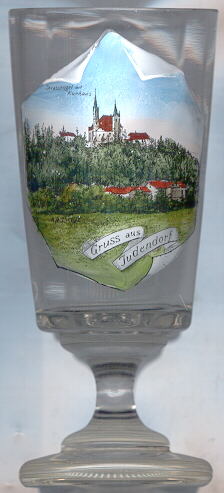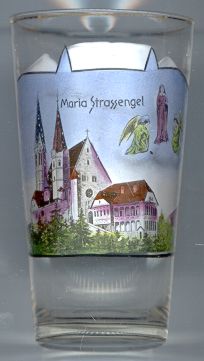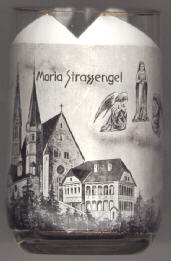

|
| ÖSTERREICH | AUSTRIA |
| Bundesland: Steiermark | Styria |
| Bezirk: Graz-Umgebung |
 The earliest mentioning of Straßengel is already
found in a document of 860 (ad Strazinolun, probably derived from slavic straza, 'lookout').
The document itself refers to the donation of land in the vicinity of Straßengel (including probably Gratwein and Gratkorn)
by King Ludwig the German to the archbishops of Salzburg.
Judendorf was first mentioned in 1147 as villa ad iudeos ('village near the jews';
this is also the earliest reference to a jewish settlement in the area of Graz).
In 1909 Straßengel was separated from the municipality of Gratwein and was merged with Judendorf to form
the new municipality of Judendorf-Straßengel. On 1 January 2015, Judendorf-Straßengel was merged again
with the municipality of Gratwein; the new municipality is now named Gratwein-Straßengel.
The earliest mentioning of Straßengel is already
found in a document of 860 (ad Strazinolun, probably derived from slavic straza, 'lookout').
The document itself refers to the donation of land in the vicinity of Straßengel (including probably Gratwein and Gratkorn)
by King Ludwig the German to the archbishops of Salzburg.
Judendorf was first mentioned in 1147 as villa ad iudeos ('village near the jews';
this is also the earliest reference to a jewish settlement in the area of Graz).
In 1909 Straßengel was separated from the municipality of Gratwein and was merged with Judendorf to form
the new municipality of Judendorf-Straßengel. On 1 January 2015, Judendorf-Straßengel was merged again
with the municipality of Gratwein; the new municipality is now named Gratwein-Straßengel.

The  pilgrimage church Maria Straßengel
is one of the most important gothic churches in Austria.
It replaced an earlier chapel of before 1208. The pilgrimage
site seems to have been founded by Margrave Otakar III of Styria in 1157.
The present church was begun in 1346, consecrated 1355 and completed 1366.
The reliefs in the west and south gates date from the 14th century and represent the
Annunciation (west gate) and the Lamentation (south gate).
Emperor Joseph II ordered the closure of the church in 1788 and plans for a demolition were made.
However, a petition by the people of the parish reached the reopening in 1789.
pilgrimage church Maria Straßengel
is one of the most important gothic churches in Austria.
It replaced an earlier chapel of before 1208. The pilgrimage
site seems to have been founded by Margrave Otakar III of Styria in 1157.
The present church was begun in 1346, consecrated 1355 and completed 1366.
The reliefs in the west and south gates date from the 14th century and represent the
Annunciation (west gate) and the Lamentation (south gate).
Emperor Joseph II ordered the closure of the church in 1788 and plans for a demolition were made.
However, a petition by the people of the parish reached the reopening in 1789.
Centre of the pilgrimages was the painting "Maria im Ährenkleid" (Our Lady in the Ear Gown) of around 1430/40.
The painting was stolen in 1976 and was replaced by a copy in 1978.
The second object of veneration in the church is the Root Crucifix (1255).
According to a legend it was found by shepherds in a tree near the chapel.
Although showing a human figure in a very naturalistic way, no traces of a carving
knife could be determined. It was also stolen in 1976 but was found again shortly thereafter.

![[scale]](lineal.jpg)